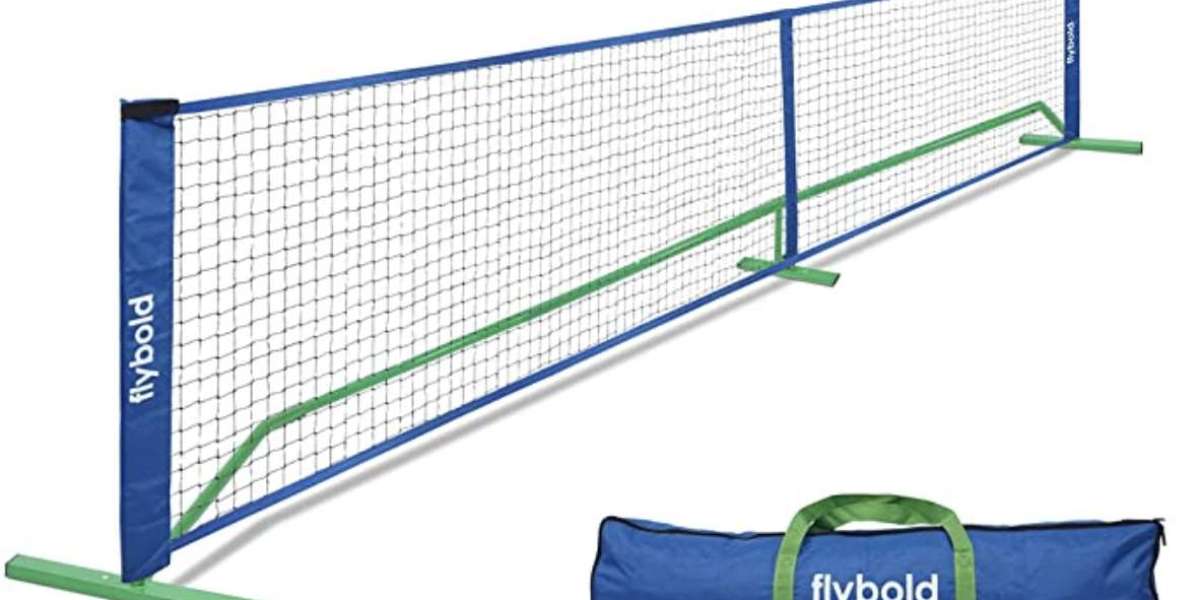Pickleball has become one of the most popular sports worldwide, attracting players of all ages and skill levels. Whether you’re just starting out or an experienced player, one essential piece of equipment is the pickleball net. The net serves as a vital part of the game, setting the boundaries and influencing the flow of the match.
Choosing the right pickleball net isn’t just about picking something that looks good—it’s about understanding what features make a net durable, functional, and perfect for your playing needs. In this beginner’s guide, we’ll break down the most important things to look for when buying a pickleball net, helping you make an informed decision so you can enjoy your game to the fullest.
What Makes a Pickleball Net So Important?
While it might seem like a simple piece of equipment, the net plays a critical role in shaping the quality of your game. The height, tension, and material of the net can all influence how the ball bounces, the pace of play, and even the overall enjoyment of the game. A net that’s too low or too high can throw off the dynamics of the game, and one that’s sagging or too tight can lead to uneven ball bounces.
Additionally, the net must be made from durable materials to withstand wear and tear, especially if you plan to use it outdoors. The right net ensures a more consistent and fair playing experience, no matter your skill level. Let’s explore some key features to consider when choosing your ideal pickleball net.
Key Features to Look for in a Pickleball Net
When selecting a pickleball net, it’s important to keep a few key characteristics in mind. Here’s a breakdown of what you should consider:
Net Dimensions and Height According to USA Pickleball Association (USAPA) regulations, the official dimensions for a pickleball net are:
- 22 feet long (standard width for doubles play)
- 36 inches high at the sidelines
- 34 inches high at the center
The net must meet these height specifications to ensure a consistent playing experience. A net that is either too high or too low can disrupt play and affect the flow of the game.
Material of the Netting The material used in the netting is crucial for durability and performance. The most common materials used are nylon and polyester. Nylon is known for being tough and long-lasting, while polyester tends to have better UV resistance, making it ideal for outdoor play. If you're using your net outdoors, it's recommended to choose a net made from a UV-resistant material to protect it from the sun's damaging rays.
Frame Construction The frame of the net supports the entire structure, so it must be sturdy. Most nets are made from either steel or aluminum. Steel frames are known for being robust and stable, while aluminum frames are lighter and easier to transport. If you plan to use your net outdoors or in high-traffic areas, it’s important to choose a frame that is rust-resistant and can handle the elements.
Tensioning System A tensioning system ensures that the net stays taut during play, preventing it from sagging. The tension should be adjustable so that you can maintain the right level of tautness over time. If the net becomes too loose, the ball will bounce unpredictably, and if it’s too tight, it could snap or distort. Look for a net with an easy-to-use tension adjustment mechanism for optimal play.
Types of Pickleball Nets
Pickleball nets come in different types depending on the intended use, and each has its advantages. Let’s go over the main options:
Portable Pickleball Nets Portable nets are lightweight and designed for easy setup and breakdown. These nets are great for people who want to play in different locations, such as parks, driveways, or indoor courts. They are easy to transport and typically come with a carrying bag for convenience. Portable nets are ideal for beginners or casual players who want a flexible setup.
Pros:
- Lightweight and easy to transport
- Quick to set up and break down
- Affordable and ideal for recreational use
Cons:
- May not be as durable as permanent nets
- Not suitable for heavy or frequent use
Permanent Pickleball Nets Permanent nets are built to last and are designed to be installed on fixed posts. These nets are commonly used in public parks, schools, or private courts. They are much more durable and stable than portable nets and can withstand more frequent play. While they’re not as portable, permanent nets offer better stability and performance in the long run.
Pros:
- Durable and long-lasting
- More stable and reliable for frequent use
- Ideal for permanent court installations
Cons:
- Requires installation and can’t be moved easily
- Higher cost compared to portable nets
Indoor Pickleball Nets Indoor pickleball nets are specially designed for use on indoor courts, where conditions like weather are controlled. These nets are often lighter and have features like rubber feet or protective covers to ensure they don’t damage floors. They’re typically made from materials that are resistant to indoor wear and tear, providing the perfect balance of performance and protection.
Pros:
- Perfect for indoor court use
- Lighter weight for easy handling
- Often includes floor-protecting features
Cons:
- Not ideal for outdoor use
- Can be less durable than outdoor nets
Heavy-Duty Pickleball Nets For high-traffic areas or facilities that experience frequent play, a heavy-duty pickleball net is a smart choice. These nets are constructed with stronger frames and thicker netting material, allowing them to endure heavy use without showing signs of wear. They’re especially useful for sports complexes, schools, or public parks where the net needs to withstand daily use.
Pros:
- Extremely durable and long-lasting
- Ideal for commercial use or heavy-duty play
- Can handle harsh weather conditions
Cons:
- Higher cost than lighter nets
- May be too bulky for casual or recreational players
How to Choose the Right Pickleball Net for You
With all the options available, choosing the right pickleball net can be overwhelming. Here are some simple steps to help you make the best choice:
Consider Your Playing Environment
- Indoor courts: If you plan to play indoors, look for nets that are lighter and include protective features for flooring.
- Outdoor courts: If you’ll be playing outdoors, choose a net made from UV-resistant materials, such as polyester, and ensure the frame is rust-resistant.
- Portable setups: If you want a portable net that can be moved around easily, a lightweight, easy-to-assemble net is ideal.
How Often Will You Use It?
- Casual play: For occasional games, a portable, affordable net will do just fine.
- Frequent play: If you play often or have a permanent setup, invest in a heavy-duty or permanent net that will stand up to wear and tear.
Budget
- Pickleball nets are available at different price points, depending on the materials, frame construction, and additional features. Set a budget based on your needs, and be sure to factor in longevity and durability when making your choice.
Conclusion: Enjoy a Better Game with the Right Pickleball Net
Selecting the right pickleball net is an essential part of ensuring you have a smooth and enjoyable experience on the court. Whether you're just starting out or looking to upgrade your setup, understanding the key features and types of nets available will help you make a better decision. Keep in mind your playing environment, how often you play, and your budget, and you'll be on your way to picking the perfect pickleball net to enhance your game!








